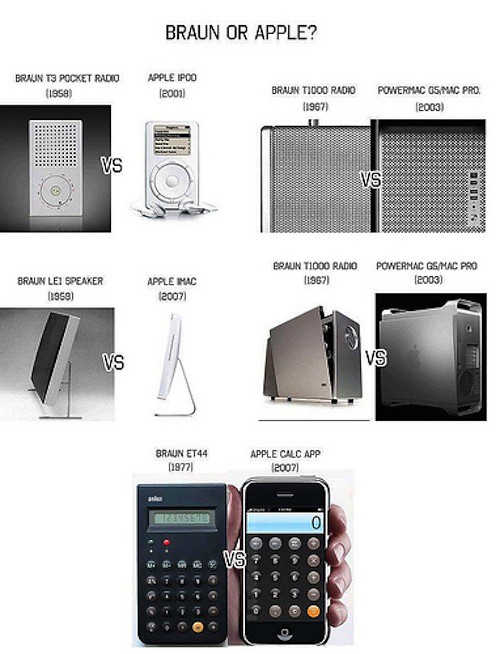Apple’s legal victory over Samsung, and its resulting $1.05 billion judgement, set off a flurry of comments and analysis about a number of broad topics. Of course, one of the major narratives to emerge in the wake of the trial centered on just what exactly should be patentable. After all, the idea that Apple was able to patent the overall industrial design of the iPhone naturally rubbed some people the wrong way.
In the weeks since, the following photo began making the rounds. It’s clear that the idea behind this little comparison chart below is to try and convey that Apple itself has been known to borrow, if not downright steal, design elements from other products. Some have even pointed to charts such as the one below as evidence that Apple is a hypocritical corporate machine that sues others for being inspired by Apple designs while, at the same time, unabashedly stealing the design aesthetic of others.

So does this chart raise a good point? Is Apple wrong to go after Samsung when it’s seemingly been inspired by previous Braun designs?
Hell to the no, and here’s why.
There’s a world of difference between Apple looking to the past for design inspiration to creates products that are completely different from the inspirational pieces themselves and Samsung who flat out copied Apple’s design to churn out the same type of product.
Apple’s iPod was never in the market competing with Braun’s T3 pocket radio. And the same goes for all of the Bruan products shown above. In contrast, devices like the Samsung Galaxy S3 compete directly with Apple’s own products, the same products Samsung has clearly looked to for inspiration.
No one has ever put forth the argument that all of Apple’s designs are wholly unique and original. The work it did on the iPhone, however, was a completely new product with an innovative and wholly original user interface. Samsung copied that to an exhaustive degree, effectively piggybacking off of the hardwork put in by Apple in an effort to make a quick buck.
In short, Samsung relied on Apple to compete. Apple perhaps looked to decades old designs as inspirations to create entirely new products.





Wed, Sep 26, 2012
Featured, News